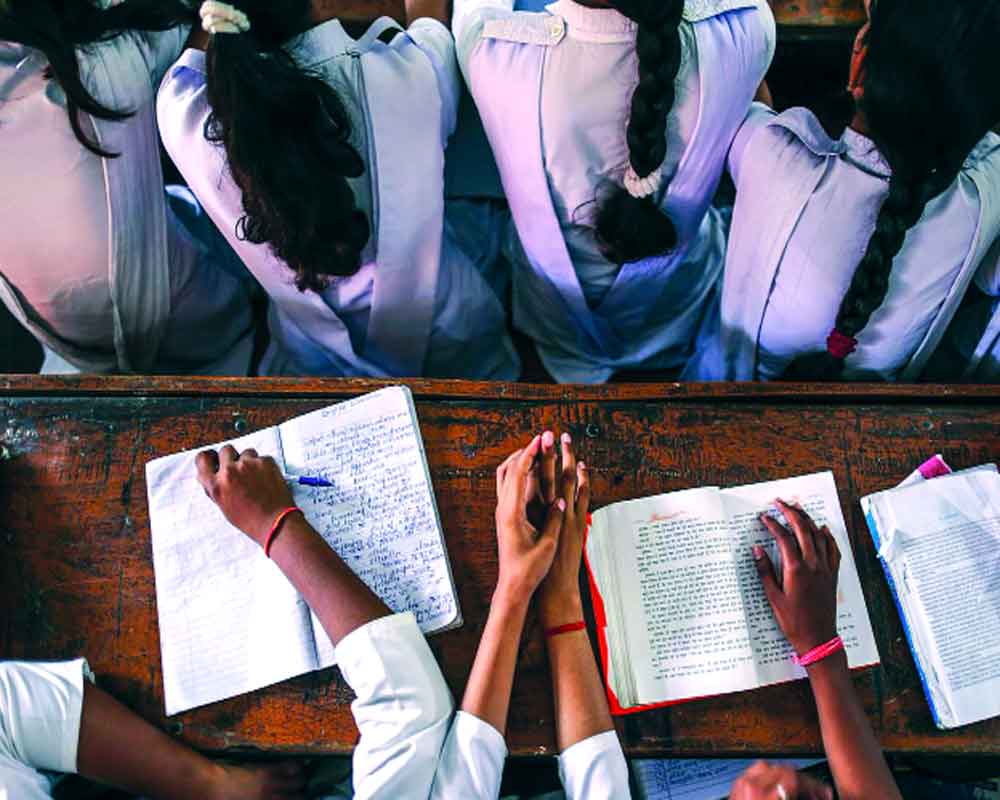Without a result-oriented revamp, the social sector allocations end up being plain vacuous
Just as we are left confused as to whether the Budget is a vision document meant for a conclave or indeed about fund allocations for sectoral growth, many would find the announcements and the length devoted on the social sector encouraging. But just as we are finding the god of deliverance in the small things, Finance Minister Nirmala Sitharaman offered some to both the health and education sectors, albeit in the nature of a summary dole than pondering on the practicalities of implementation. She announced an outlay of Rs 69,000 crore for healthcare, up from Rs 62,398 crore last year and still short of the 2.5 per cent of the GDP promised by the Government. This is way off the Rs 1,50,000 crore that health industry bigwigs had sought to drive the sector forward. And way lesser than what other emerging economies, BRICS and even Afghanistan and Nepal are spending. For a nation that has an increasing disease burden and a rapidly ageing population, a fact we disregard as we obsess over our young productive age group, there is no major policy overhaul that is indicated. That probably has got to do with the fact the Ayushman Bharat Yojna, which provides a cover of up to Rs 5 lakh per poor family, has yet to overcome hurdles of execution. Private hospitals are yet to rationalise their packages with the subsidised costs and at the micro-level are turning away applicants who do not understand the fine print of medical conditions and what makes them eligible for entitlement and what not. There’s a question hovering over the number of marginalised people it has managed to shield. So the Government has played safe by just apportioning a part of the total allocation, Rs 6,400 crore, for the scheme. Instead, it would have been far more prudent for the Government to route some funds to smaller hospitals in Tier II and III cities and net them in as providers of Ayushman Bharat. Of course, the Government has been responsive in addressing the gaps in the public health delivery system by provisioning for local medical colleges to be attached to district district hospitals in the private-public partnership (PPP) mode, with some exemptions on land to be acquired for this purpose. The FM also announced a special bridge course for medicare professionals. India’s doctor to patient ratio is 1:1,445, against the WHO benchmark of 1:1,000. Duties on imports and special incentives for using medical devices “Made In India” may sound good but what really needs to be addressed are their quality and standardisation. Neither is there any mention of insurance, which experts have been suggesting should be tiered, for employees, the self-employed and elders, and backing them up with increased tax deductions.
The FM has allocated Rs 99,300 crore to the education sector, Rs 3,000 crore for skill development and even proposed FDIs. Clearly responding to criticism that our teaching modules fall way behind employability indices, she has announced apprenticeships at 150 higher education institutions and urban local bodies. The degree-level online education programmes to be offered by 100 top institutions would work only in terms of outreach at best. But what our education sector really needs is standardisation, quality and dynamic evolution of teaching systems. Some reports say that 63 per cent of school students will be unemployable when the fourth industrial revolution takes place and our universities, except IITs, do not even make it to the global top 100 list. Without a result-oriented revamp, the social sector allocations end up being plain vacuous.


























